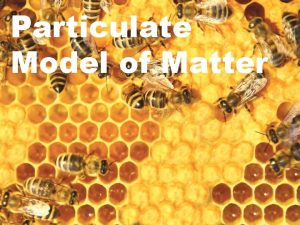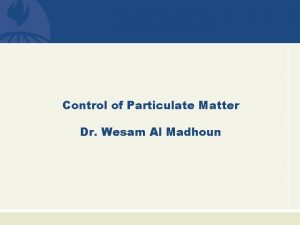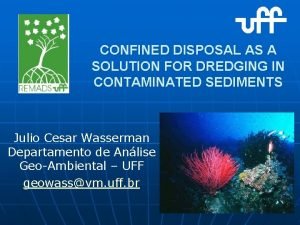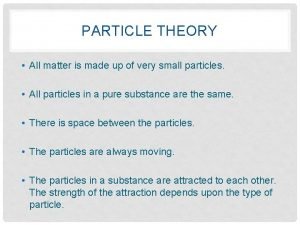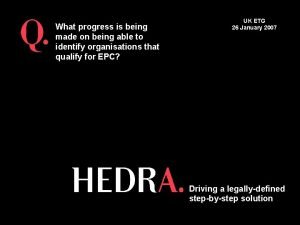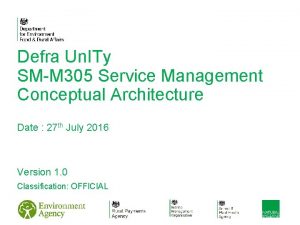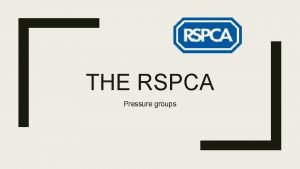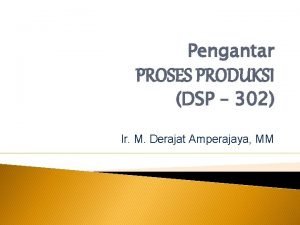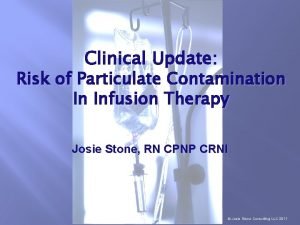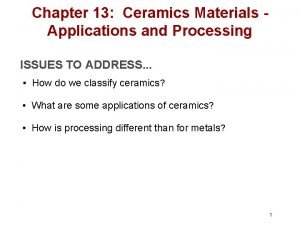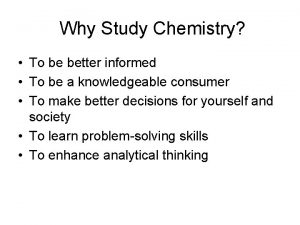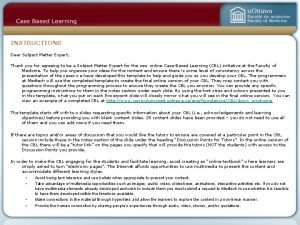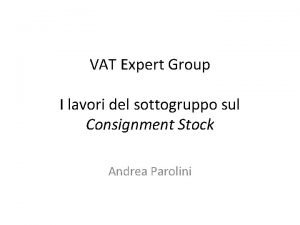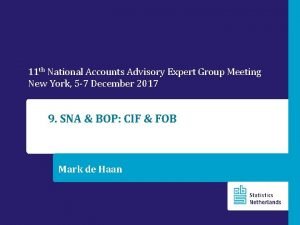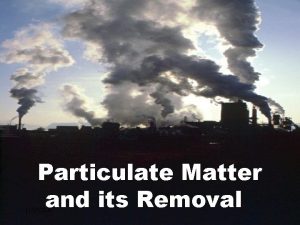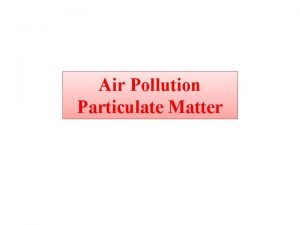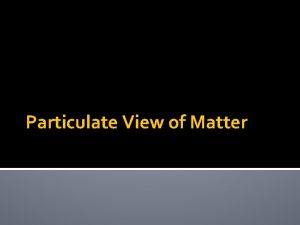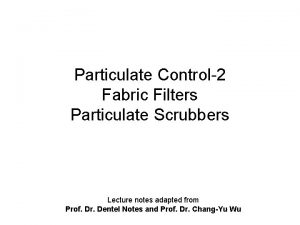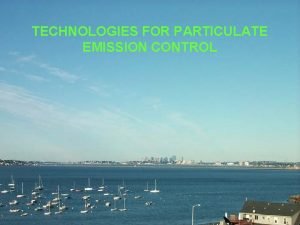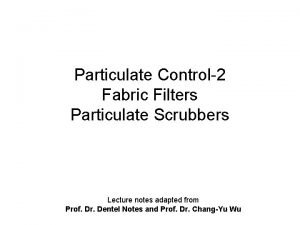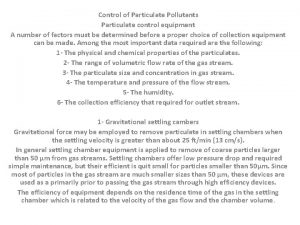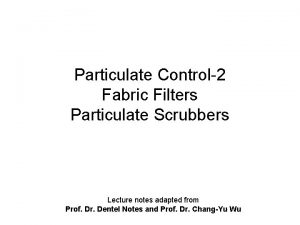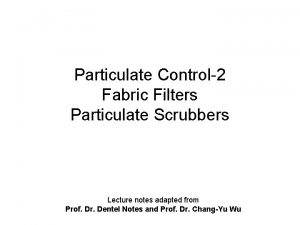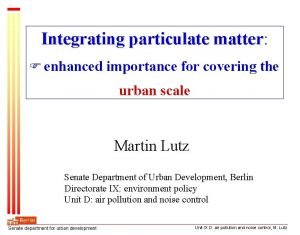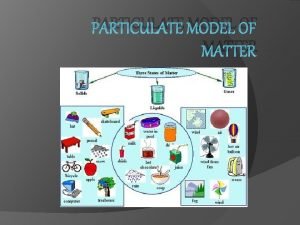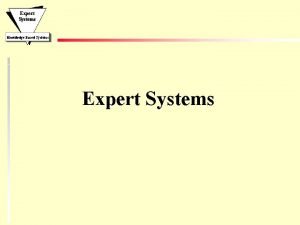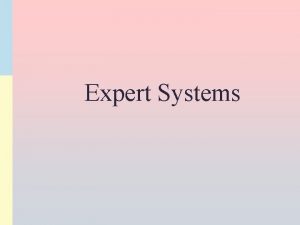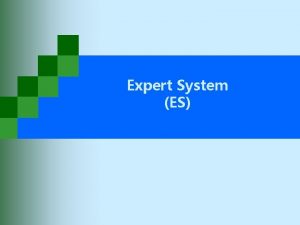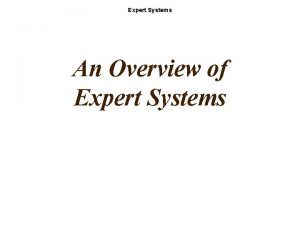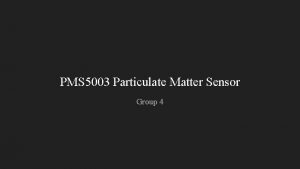CLRTP particulate matter expert group Welcome to Defra


























- Slides: 26

CLRTP particulate matter expert group Welcome to Defra and London

Review of first meeting

CLRTP particulate matter expert group Objective n Improved technical understanding of the abatement options and the technical possibilities to reduce concentrations of particulate matter under the Convention

Scope n n n The work of the group is scientific and technical The conclusions and recommendations will be important for helping policy makers with future decisions on emissions controls Chaired by UK and Germany

First meeting May 2005, Berlin n Main discussion items: n n sources contributing to the transboundary transport of particulate matter (PM); assessing future changes in PM emissions and concentrations, as related to existing protocols to the Convention and other instruments; technical and non-technical measures available for further reduction of PM levels; and adequate strategy to address PM under the Convention.

Key points, conclusions and recommendations Key points: n noted the strengthened evidence showing links between relative risk of mortality and levels of PM 2. 5, while noting PM 10 is not innocuous; no evidence for a threshold of effects at the population level; and recognized that even in 2010 there will be significant mortality associated with PM levels and there was a need for further policy action.

Key points, conclusions and recommendations n n n models show transboundary character of not only secondary PM 2. 5 but also primary PM 2. 5 and to a lesser extent PM 10. potential to reduce further both primary and secondary PM. Abatement measures should address both. While the focus should be to reduce PM 2. 5, the coarse fraction should not be ignored; potential for further emissions reductions but there is a big difference in this potential between EU countries and EECCA countries. Specific strategies may need to be developed for EECCA countries;

Key points, conclusions and recommendations n n even with current legislation, in 2020 there still will be potential for applying readily available low cost measures to reduce emissions; other measures though technically feasible could only be applied at high cost; and in addition to technical measures there is potential to explore the use of nontechnical measures.

Work plan 2006 Item a n Assess the degree of control of pollutants contributing to the formation of PM already provided by existing protocols to the Convention and submit a draft report to the Working Group on Strategies and Review at its thirtyeighth session in 2006; (United Kingdom/Co-Chair and Netherlands)

Work plan 2006 Item b n Review current work under the Convention on PM, taking also into account the latest results of the forthcoming Thematic Strategy on Air Pollution of the European Community and similar strategies of other Parties and submit a draft report to the Working Group on Strategies and Review at its thirty-eighth session in 2006; (United Kingdom/Co-Chair, European Commission, United States and Netherlands)

Work plan 2006 Item c n Using, inter alia, the results of the EMEP model, prepare supporting information for the third meeting of Expert Group for reviewing the characteristics of PM as a transboundary pollutant, e. g. contribution to ambient concentrations from national, regional and hemispheric sources, and consider the implications of choosing different particle size fractions; (Co-Chairs to liaise with MSC-W)

Work plan 2006 Item d (revised) n Consider, inter alia, the work of CIAM, MSCW and CCC on scientific evidence and technical requirements to reduce exposure to primary and secondary PM. Develop, where possible, further technical and non-technical measures to assist parties to reduce PM emissions and exposure and to prepare supporting information for the third meeting of Expert Group (Germany/Co-Chair to liaise with CIAM)

Input and exchanges with other groups/organisations n Task b n n Tasks b & d n n TF measurements and modelling Tasks c & d n n n TF integrated assessment modelling/CIAM Task c n n EU Commission Meteorological Synthesising Centre West TF emission inventories & projections Task d n Chemical Coordinating Centre

Future meetings, 2005 & 2006 n Second meeting n n Third meeting n n n Workshop – 7 & 8 November 2005, London Dessau – early spring 2006 Report to WGSR, September 2006 Fourth meeting n London, late 2006

Scope of 2 nd meeting n n n Workshop – plenty of time for discussion Consider key questions Start to think about possible options for incorporating control of PM emissions and exposure into CLRTAP Lay the foundations for report to WGSR in September 2006 No formal co-chairs’ report

KEY QUESTIONS

Transboundary PM characterisation 1. 2. 3. 4. To what extent is PM a transboundary pollutant? Is PM a hemispheric pollutant? Which components of PM have a significant transboundary element? What are the important emissions sources of transboundary PM?

Primary PM emissions sources 5. 6. 7. 8. 9. Are primary PM emissions important in transboundary pollution? Are PM emissions inventories robust? What are the important uncertainties in PM emissions inventories? How might PM emissions inventories be improved? Are measurements and modelling robust enough to apportion imported and exported PM?

Mitigation of primary PM emissions 10. 11. 12. 13. What are the key sources of primary PM emissions? What abatement measures are currently used to mitigate primary emissions of ambient PM? What measures are most suitable for EECCA countries? What abatement measures are available to further reduce ambient concentrations of ambient PM in (a) EECCA and (b) other countries?

Evening meal, 7 November n n Browns Restaurant, Butlers Wharf 10 minutes walk from Tower Hill Underground Station Meet hotel lobby, 18. 45 Guests of Defra

Conclusions n n PM has an important transboundary element. The extent depends on the region/country. Secondary PM 2. 5 and primary PM 2. 5 are important. PM 10 to a lesser extent. There is potential to reduce further both primary and secondary PM. Abatement measures should address both. While the focus should be to reduce PM 2. 5, the coarse fraction should not be ignored; There is a big difference in this potential between EU countries and EECCA countries. Specific strategies may need to be developed for EECCA countries;

Conclusions n There is enough evidence (based on emissions inventories and modelling) to identify key sources - which ones are important depends on the region n EU n n n Road transport and shipping Residential and smaller combustion plant Industrial processes and waste Agriculture EECCA n All sectors, particularly production and non-industrial processes

Conclusions n n There is room for improvement beyond CLE for key emissions sectors Further reductions of primary PM emissions are a cost-effective means for improving ambient PM 2. 5

Conclusions n n Modelling and emissions inventories are uncertain and could be improved, but they’re robust enough to identify key sources Encourage all countries, particularly EECCA, to develop, improve and report primary PM emissions inventories n n requires capacity building Encourage Parties to support improvement and harmonization of emissions factors and activity data; this may be through the work of TFEIP and its inventory reviews

Conclusions n The options for controlling PM under the Convention will influence the level of certainty required for inventories and modelling n Inventories and modelling should be fit for purpose, not necessarily technically ideal

Next steps n For next meeting (Spring 2006) n n Draft report on tasks a and b by February 2006, for discussion Working groups to draft dossiers on key sectors (focus on primary PM) n n Quality and completeness of emissions data Contribution to ambient concentrations and potential exposure Abatement measures Co-chairs to draft n n Summary of conclusions to date and outline structure for report Technical input for policy instruments
 What is the particulate model of matter
What is the particulate model of matter Wesam al madhoun
Wesam al madhoun Confined space dredging
Confined space dredging Particle theory
Particle theory Defra
Defra Defra
Defra Is the rspca an insider group
Is the rspca an insider group Particulate processing adalah
Particulate processing adalah Particulate contamination in infusions
Particulate contamination in infusions Particulate forming ceramics
Particulate forming ceramics Particulate radiation
Particulate radiation Which are the main group elements
Which are the main group elements Chromosomes and alleles
Chromosomes and alleles Thank you note to subject matter expert
Thank you note to subject matter expert Vat expert
Vat expert Advisory expert group on national accounts
Advisory expert group on national accounts Classification of matter section 1 composition of matter
Classification of matter section 1 composition of matter White matter of brain
White matter of brain Composition of matter section 1
Composition of matter section 1 Chapter 2 section 1 classifying matter answers
Chapter 2 section 1 classifying matter answers Primary taste cortex
Primary taste cortex Section 1 composition of matter chapter 15 answer key
Section 1 composition of matter chapter 15 answer key Gray matter and white matter
Gray matter and white matter Telencephalon
Telencephalon Energy naturally flows from warmer matter to cooler matter.
Energy naturally flows from warmer matter to cooler matter. Wise men three clever are we
Wise men three clever are we Cb_xps
Cb_xps
